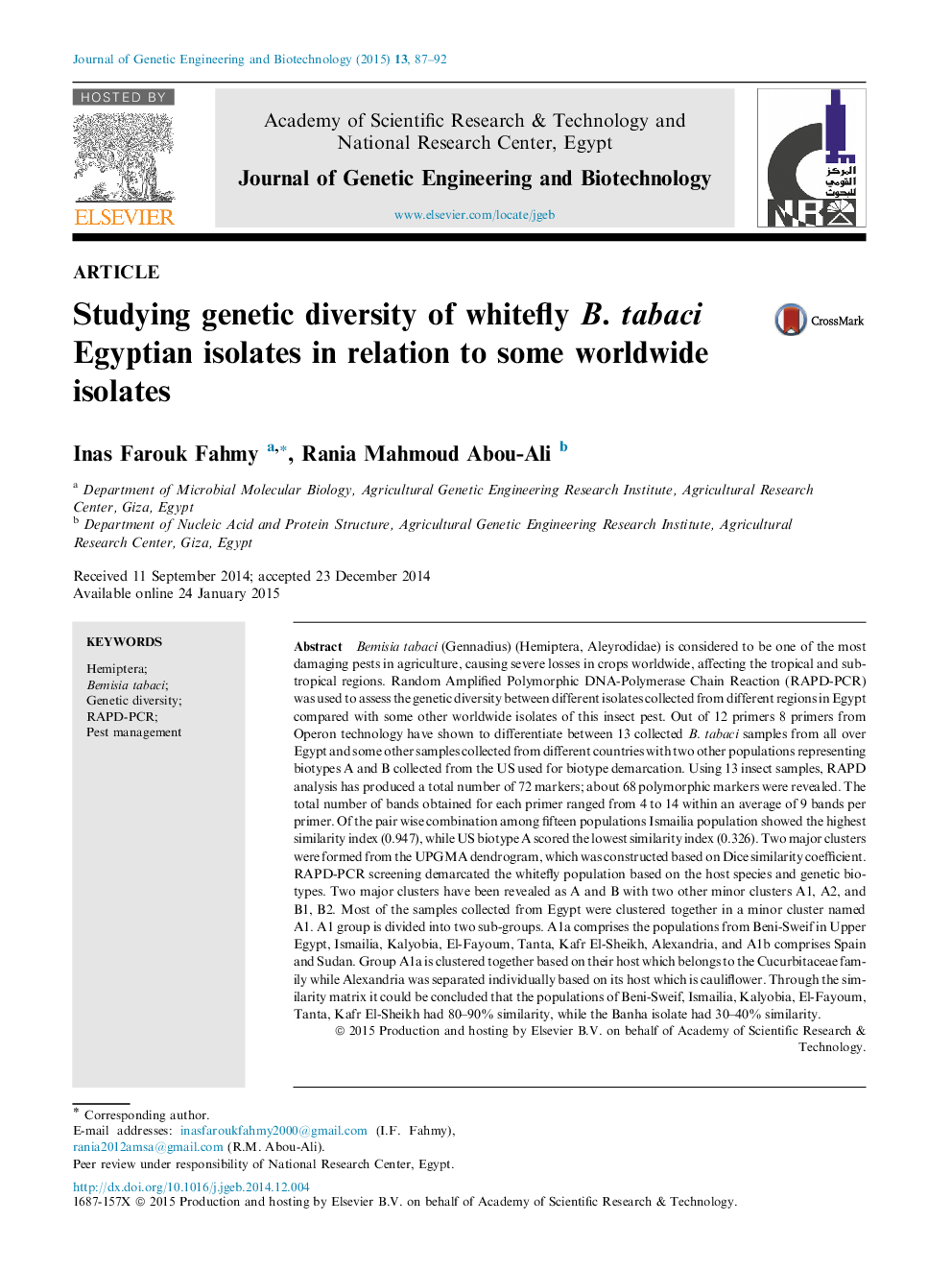| کد مقاله | کد نشریه | سال انتشار | مقاله انگلیسی | نسخه تمام متن |
|---|---|---|---|---|
| 2087912 | 1080719 | 2015 | 6 صفحه PDF | دانلود رایگان |
Bemisia tabaci (Gennadius) (Hemiptera, Aleyrodidae) is considered to be one of the most damaging pests in agriculture, causing severe losses in crops worldwide, affecting the tropical and subtropical regions. Random Amplified Polymorphic DNA-Polymerase Chain Reaction (RAPD-PCR) was used to assess the genetic diversity between different isolates collected from different regions in Egypt compared with some other worldwide isolates of this insect pest. Out of 12 primers 8 primers from Operon technology have shown to differentiate between 13 collected B. tabaci samples from all over Egypt and some other samples collected from different countries with two other populations representing biotypes A and B collected from the US used for biotype demarcation. Using 13 insect samples, RAPD analysis has produced a total number of 72 markers; about 68 polymorphic markers were revealed. The total number of bands obtained for each primer ranged from 4 to 14 within an average of 9 bands per primer. Of the pair wise combination among fifteen populations Ismailia population showed the highest similarity index (0.947), while US biotype A scored the lowest similarity index (0.326). Two major clusters were formed from the UPGMA dendrogram, which was constructed based on Dice similarity coefficient. RAPD-PCR screening demarcated the whitefly population based on the host species and genetic biotypes. Two major clusters have been revealed as A and B with two other minor clusters A1, A2, and B1, B2. Most of the samples collected from Egypt were clustered together in a minor cluster named A1. A1 group is divided into two sub-groups. A1a comprises the populations from Beni-Sweif in Upper Egypt, Ismailia, Kalyobia, El-Fayoum, Tanta, Kafr El-Sheikh, Alexandria, and A1b comprises Spain and Sudan. Group A1a is clustered together based on their host which belongs to the Cucurbitaceae family while Alexandria was separated individually based on its host which is cauliflower. Through the similarity matrix it could be concluded that the populations of Beni-Sweif, Ismailia, Kalyobia, El-Fayoum, Tanta, Kafr El-Sheikh had 80–90% similarity, while the Banha isolate had 30–40% similarity.
Journal: Journal of Genetic Engineering and Biotechnology - Volume 13, Issue 1, June 2015, Pages 87–92
